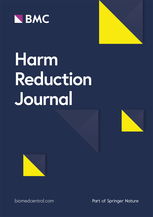Posted on May 12, 2017
Source: BMC Harm Reduction Journal

Mitigating the heroin crisis in Baltimore, MD, USA: a cost-benefit analysis of a hypothetical supervised injection facility
Amos Irwin, Ehsan Jozaghi, Brian W. Weir, Sean T. Allen, Andrew Lindsay and Susan G. Sherman
Background
In Baltimore, MD, as in many cities throughout the USA, overdose rates are on the rise due to both the increase of prescription opioid abuse and that of fentanyl and other synthetic opioids in the drug market. Supervised injection facilities (SIFs) are a widely implemented public health intervention throughout the world, with 97 existing in 11 countries worldwide. Research has documented the public health, social, and economic benefits of SIFs, yet none exist in the USA. The purpose of this study is to model the health and financial costs and benefits of a hypothetical SIF in Baltimore.
Methods
We estimate the benefits by utilizing local health data and data on the impact of existing SIFs in models for six outcomes: prevented human immunodeficiency virus transmission, Hepatitis C virus transmission, skin and soft-tissue infection, overdose mortality, and overdose-related medical care and increased medication-assisted treatment for opioid dependence.
Results
We predict that for an annual cost of $1.8 million, a single SIF would generate $7.8 million in savings, preventing 3.7 HIV infections, 21 Hepatitis C infections, 374 days in the hospital for skin and soft-tissue infection, 5.9 overdose deaths, 108 overdose-related ambulance calls, 78 emergency room visits, and 27 hospitalizations, while bringing 121 additional people into treatment.
Conclusions
We conclude that a SIF would be both extremely cost-effective and a significant public health and economic benefit to Baltimore City.